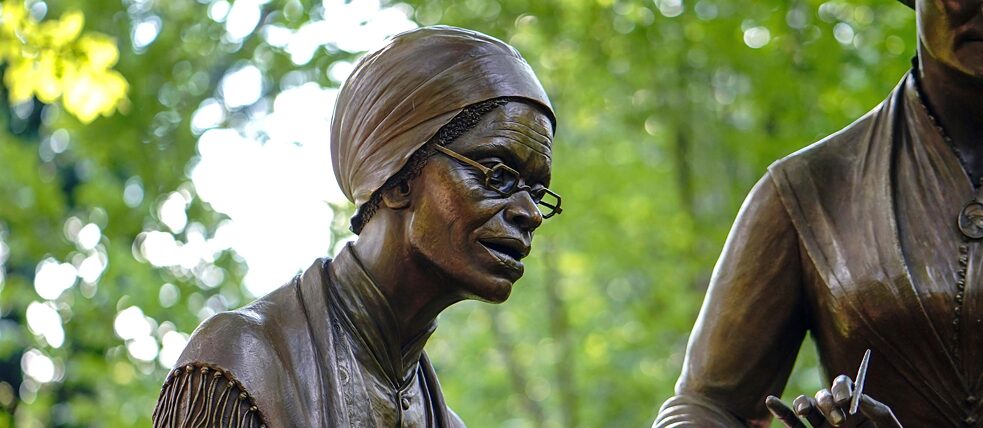Intersectional Feminism
A Community Garden

Diversity is not easy, but beautiful in many ways. The path towards equality mustn’t be a maze, but a community garden. In her essay, Dr. Michaela Dudley shows that the women’s movement can only hope for lasting progress if we understand it as intersectional.
By Michaela Dudley
As advocates of women’s rights, it’s our task to ensure that a pioneer like the African-American Sojourner Truth (1797-1883) is appreciated accordingly. It’s a matter of respect, as Aretha Franklin (1942-2018) would teach us, letter by letter, in song. Modern feminism should take the time to follow in Sister Sojourner’s footsteps. Like her Black contemporaries Harriet Tubman and Ida B. Wells, who were also born into slavery, Truth broke her chains without turning her back on her brothers and sisters. Harriet Tubman, the fearless conductor of the Underground Railroad, is probably widely known beyond Black History Month. By contrast, Ida B. Wells is unfortunately not yet familiar to many outside the Black community, although the journalist deserves recognition for her ground-breaking reports on racist lynching and as an activist for women’s suffrage.
Nomen est omen: With her 1851 speech “Ain’t I a woman ...?”, Truth certainly spoke the truth.
Ain’t I a woman? Look at me! Look at my arm! I have plowed, and planted, and gathered into barns, and no man could head me – and ain’t I a woman?
Sojourner Truth
Women are discriminated against for their origin, creed, social class, age group and especially because of their gender – to name just a few categories. Often, activists who are discriminated against in multiple ways go unnoticed or barely noticed, even though they are at the forefront of the struggle. One example is Marsha P. Johnson (1945-1992). The Black transgender woman who threw the first stone at Stonewall in 1969, sparking the modern gay rights movement, is too often rendered invisible in feminist historiography. Through the breadth of disadvantages that we intersectionally affected women experience, it is possible for us to find common ground and develop common strategies to fight patriarchal structures of domination, but also to offer each other support when it is “just” a matter of fending off the annoying microaggressions of everyday life.
Sojourner Truth is not just a heroine of Black women; she is a role model for all women. We Black women are not responsible for the ghettoisation of history. We seek connection and offer approaches. Black feminism is not exclusive “Alice Schwarzer feminism,” but inclusive and forward-looking. Together we need to roll up our sleeves, together we help each other out. In this way, we can cultivate our garden and make it more colourful, while feminism puts down ever deeper roots.